Description
“The band broke up right in front of my eyes, but it still doesn’t feel real. I wonder why?” This is what a prog rock fan said after U.K.’s final show at Nakano Sun Plaza the other day. It’s been about three weeks since the band brought the curtain down on their history here in Japan, but I think it’s a common sentiment shared by many fans that it still doesn’t feel real. This weekend, we will be releasing the ultimate super, super, super ultra-excellent sound quality version of U.K.’s final show, which will give us a sharp answer to that question! “THE FINAL IN JAPAN,” released two weeks ago, was well-received as a great album that contains the complete recording of the two shows in Japan that closed the history of U.K.’s activities, and “THE FINAL CONCERT 2015 (free 2 CDRs),” which was released as a gift disc the same week, was also well-received as a high-quality version that was too good to be a gift disc. Both records are of sufficient quality as memorial recordings, and in fact, we have received many happy comments from customers who have come to our store after purchasing them. However, when it comes to a sound source that can withstand being used as “material for performance research”, the story is a little different. This is because a sharper sound with less musical ambiguity is required. In other words, rather than a memorial, a cool documentary quality that specializes in sound quality is required, which inevitably brings to mind leaked sound sources from a desk recording or the arrival of a super high-quality in-ear monitor matrix… But that is not how it works, which is what is interesting about recording equipment these days. This recording is a popular recording method that combines the MK4 microphone and linear PCM recorder that experienced tapers are currently paying the most attention to! Shops MK4 microphone… If you are familiar with bootlegs, you may have seen and heard the name here and there recently. It is a German-made unidirectional microphone that has received tremendous support and high praise not only from tapers but also from recording fans in general as an ultra-high performance microphone that perfectly records the sound of the scene with incredible closeness and clarity. The original source for this recording is a high-resolution recording made by combining the MK4 with a linear PCM recorder called PCM-D100, which is the pride of a major domestic manufacturer, and its recording potential is so amazing that it easily exceeds even professional recording. Some people may wonder, “Even though it’s an AUD recording, the sound is closer and better than professional SBD or in-ear monitors… is that even possible?”, but this is a reality. Recently, bootleg titles have gradually begun to appear, and it has attracted a lot of attention as a royal road restoration recording method that casts a stone on the in-ear monitor matrix, which has both pros and cons. However, experience and sense are also required to record with excellent sound that attracts people’s attention. The sound image changes depending on the equipment and installation method combined with the MK4, and there are also differences depending on the recording position. The original source of this recording also had a slight factor, and although it was a high-quality source that made a strong impression, the bass felt a bit thin overall. So, we remastered it (using the latest equipment introduced in 2015) without affecting the original sound, and strengthened the lacking bass part, and we realized a miraculous ultra-high quality sound that brought out the charm of the original source at its highest value. In other words, all the sounds appear at an incredibly close distance, and even at high volume, they are not muddy, crushed, or blurred at all, and even the subtle sounds of the soft sounds are picked up, and the sharpness of the rise is also surprisingly outstanding. There is no noise, and the weight of the mid-to-low range and the attack of the high range with a core and extension are amazing. Above all, the closeness and clarity of the vocal line without a single cloud, as if it were a unidirectional microphone, exceeds even table recordings and in-ear recordings, and to be honest, it is a bit abnormal. Of course, it is a complete uncut recording and the recording time is long, for example, track (1) which conveys the situation before the start of the show is recorded about 3 and a half minutes longer than “THE FINAL IN JAPAN”. The female announcer in the venue before the show has also been recorded in full from the beginning, and you will be excited by the advantage from the beginning of the disc. In “Thirty Years”, not only is the closeness of Wetton’s voice, the weak sound of the guitar, and the faint sound of Mangini’s beats perfectly recorded, but all the sounds appear at an abnormally close distance, and all 10 out of 10 people will be convinced that it will exceed the official recording. “Nevermore” brings out the possibilities and charm of the performance by this lineup with ultra-class sound quality. What is particularly breathtaking is the rhythm work of Wetton and Mangini, and you can enjoy how the sounds that make you feel the intelligence of the hits, whether they are continuous or single notes, support the song from the rhythm side, and how they created the heartbeat of the song in conjunction with the bass with amazing sound quality. “Carrying No Cross” also appears with incredible clarity from the beginning, and there are scenes where you can feel the power of the MK4 microphone everywhere. The sequence sound that comes in from around 6 minutes 19 seconds also appears to get closer and farther away with amazing closeness, and the keyboard that sings through it, the bass that starts moving, and the low tones of the drums all come out at an astonishingly close distance. The deep echo of the drums that comes in at the end of the song is something you would never experience with other titles. The keyboard that introduces “Alaska” also sounds incredibly close and thick, and you may faint if you hear it for the first time. The sound image from 2 minutes 58 seconds, when the ensemble moves, jumps out with the sharpness of lightning exploding in front of you, and the highly explosive performance of “Time To Kill” will amaze you with the sharp and tough sound image that feels the skeleton of the rhythm. In addition, the sound of Wetton humming (1 minute 44 seconds to 45 seconds) is also clearly picked up, but this is one of the scenes that is difficult to understand because it is buried in the overall sound in the sound quality and recording sound of other titles on the same day, and the advantage of this recording is that you can hear this clearly. Similarly, in track (7), Eddie’s voice sounds very close and clear, but because he has a thin voice, he has not been able to pick up the voice perfectly in other titles on the same day. Therefore, it is a nice point of this recording that you can clearly hear the MC here. In “Night After Night”, the power of the tough sound in the mid-range and the wide range of the recording stand out, and the singing voice with a lot of fisting hits you with a closeness and clarity that you can’t believe your ears. The gloss of the keyboard and the clear approach of the drums in the development section also evoke a fresh emotion, and Eddie’s MC, which comes back after the performance, can be enjoyed clearly as in track (7). In “Rendezvous 6:02”, the effect of using crash cymbals (or Mangini’s interpretation) emerges vividly from the latter half of the song, which should increase the understanding of the final performance that explores the possibilities from the rhythmic aspect, and the difference between the vocal echo of the first verse and the echo of the second verse can be instantly felt. This echo change will not be noticed unless you listen very carefully in the sound image of other titles. In “Nothing To Lose”, a powerful keyboard that ousts all other titles on the same day rises sharply from close range, and the excitement of the music pushing up high and far away explodes from the very beginning. The occurrence of keyboard equipment troubles along the way is also vividly captured with a high purity sound, and all the documents that happened in the final performance can be perfectly followed. In “In The Dead Of Night”, the closeness of the sounds of each instrument is combined with the highly explosive performance, and the listeners will be stunned by the superb sound image that is so tough and so loud that it trembles. Another attraction is the bass that is typical of Wetton, which is very effective in the middle part, and in “By The Light Of Day”, where the song transforms, each instrument overlaps with a close sound with the highest transparency, and the tapestry of the ensemble full of vitality passes by your ears one after another. “Forever Until Sunday” is a dazzling sound in which the mid-to-high range tones of the violin contrast with the crisp rhythm sound that roars in the low range, but even those who listened to the title of the same day on another label would not have been able to enjoy this performance with such a precise and transparent sound. As the beautiful sound of the guitar drifts, the music of each song comes together and overlaps, and you can enjoy the true documentary of this unreleased song being completed with the best performance with the superb sound. “Caesar’s Palace Blues” hits your ears with the highest level of real dynamism and sharpness of touch that could not be fully conveyed in other titles on the same day. Another surprising topic is that the vocal sound is even closer, and it should feel like Wetton is singing in your ears rather than next to your ears. Please pay attention to the ultra-class clarity and super close sound image of the final performance with the Japanese fans who have been supporting him enthusiastically for many years, as they make the audience sing the chorus part. In “The Only Thing She Needs,” a crunchy, characteristic riff is engraved (from around 00:38 and 2:53), but the appeal of this work is that you can enjoy this tone with a special sound full of drive (other titles do not produce such sharp sounds). The vocals are surprisingly close, the drums are incredibly clear, and the violin sounds leading to the coda are stunned, but you will be astonished at how these sounds come out abnormally close without being crushed in the slightest. After the final verse of “Carrying No Cross,” the recording continues for nearly six minutes, and not only Eddie’s thanks and Wetton’s “Goodbye,” but also the long “U.K.! U.K.!” call that rises twice, and the in-house announcement announcing the end of the show are all recorded in clear sound until the end, and it boasts a perfection that cannot be imagined as a documentary recording. Now, after listening to the final performance with such a good recording, I once again feel the words of my acquaintance mentioned at the beginning, “Even though the band broke up, I can’t really feel it.” It’s strange but true, but there are quite a lot of performance information in music that can only be conveyed and understood by listening to it on CD rather than listening to it live. This is probably the basis of the fun and interest of dealing with bootlegs, and listening to the performance you experienced that day again with a good recording will bring about many rediscoveries that you didn’t notice on the day, and analyzing the performance will help you build a deeper understanding within yourself. However, in order to do that, you need to listen to the performance with a recording that is as good as possible, and the sound quality must be easy to empathize with, but there is no need to worry about that with this work. After all, the sound you can hear here is ultra-class sound quality that easily surpasses the recently popular expression “on” sound. However, when you listen to this final performance again with this work that thoroughly picks up the sounds at the scene, you naturally notice a fact that answers the question my acquaintance asked. That is the fact that the performance by the final lineup with Mike Mangini presented a very large musical possibility. As you can see from the excellent sound quality of this work, this performance is too much of a possibility for the final performance that closes the curtain on their history, and it strongly foreshadows the band’s next step. That’s why he probably didn’t “feel” the breakup. However, the souvenir for the future that the band left behind at the end – the musical possibility – was a real and happy gift that made the theme of breakup disappear, and I’m sure many people will realize the same thing when they listen to this work. In other words, it is so deep that it is the ultimate title that can communicate with all the sounds of the final performance. This weekend, be sure to check out this other dimension of ultra sound that will drive out all other sources recorded on the same day.I would like you to try it out. Live at Nakano Sunplaza, Tokyo, Japan 30th April 2015 TRULY ULTIMATE SOUND Disc 1(77:39) 1. Intro 2. Thirty Years 3. Nevermore 4. Carrying No Cross 5. Alaska 6. Time To Kill 7. MC 8. Night After Night 9. Keyboard Solo (Ballooning Over Texas) 11. Drum Solo 12. Member Introductions & MC 1 3. Rendezvous 6:02 Disc 2(50:32) 1. Nothing To Lose 2. In The Dead Of Night 3. By The Light Of Day 4. Presto Vivace And Reprise 5. Forever Until Sunday 6. Caesar’s Palace Blues 7. The Only Thing She Needs 8. Carrying No Cross (Last Verse) John Wetton – Bass, Vocals Eddie Jobson – Keyboards, Violin Alex Machacek – Guitar Mike Mangini – Drums, Percussion
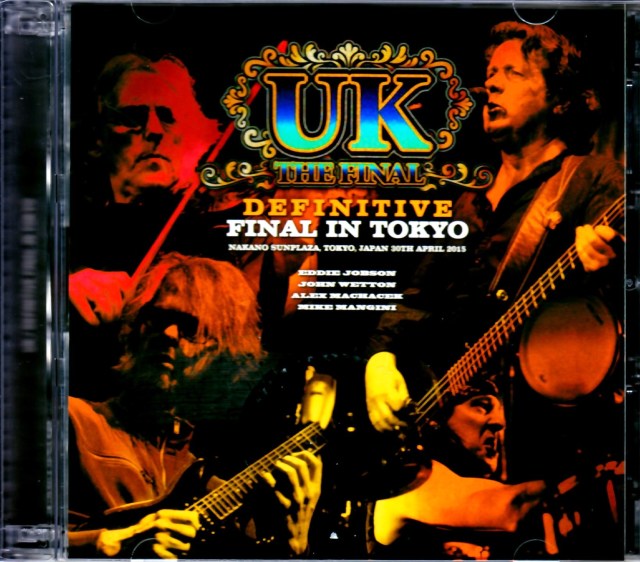

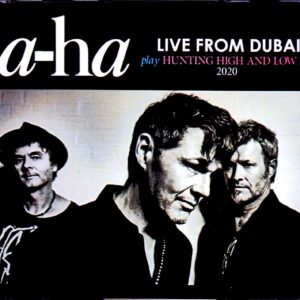
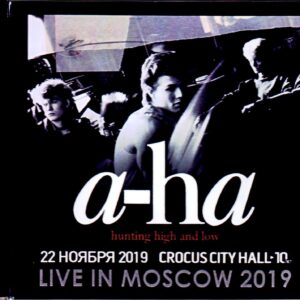
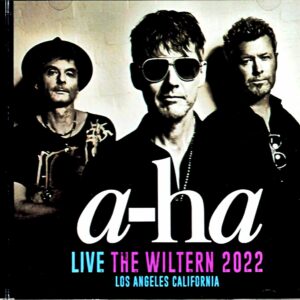
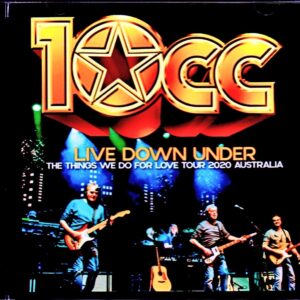
Reviews
There are no reviews yet.